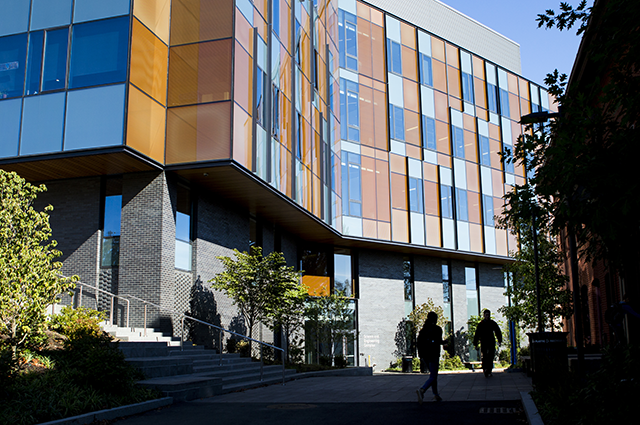Paper selected as editor’s choice

Faculty members across the School of Engineering regularly bring together their unique areas of study to collaborate on research. Recently, several labs from the Department of Chemical and Biological Engineering collaborated to study cell-cell interactions using flow cytometry and fluorescence activated cell sorting in a synthetic yeast environment. The group was recently recognized for their work, titled “Flow cytometric evaluation of yeast-bacterial cell-cell interactions,” when the article was selected as editor’s choice in the journal Biotechnology and Bioengineering.
PhD student Ming Lei, former postdoctoral scholar Vikas Trivedi, Associate Professor Nikhil Nair, Professor and Dean of the School of Engineering Kyongbum Lee, and Bright Futures Assistant Professor James Van Deventer, all of the Department of Chemical and Biological Engineering, worked together on the research, which builds an understanding of cell communities.
The team’s work validates the existence of a previously discovered nanobody, or single-domain antibody, that can bind to intimin proteins in E. coli. When E. coli bacteria enter the body, they release intimin, which is the protein that makes E. coli virulent. Intimin invades the cells and sets up a site for the E. coli to adhere. Without intimin, E. coli would not be able to attach to the intestines and cause diarrhea. Discovering an alternate nanobody that could bind with intimin would stop E. coli in its tracks and provide a possible effective treatment for E. coli infections.
The researchers confirmed one potential bacterial surface-binding molecule, and the yeast-bacteria format would allow for the quick and efficient discovery of additional antibodies with further research. The methods and approach of this research emphasize the strengths of each member of the project and highlight the collaborative nature of research at the School of Engineering.
Department:
Chemical and Biological Engineering